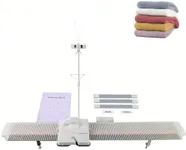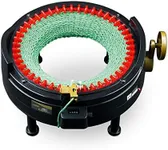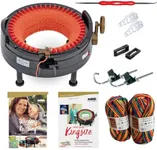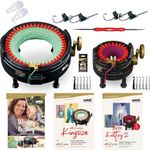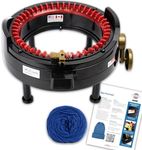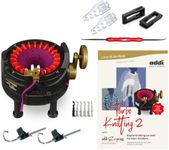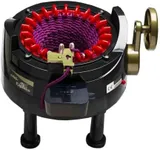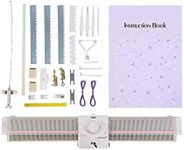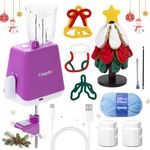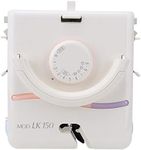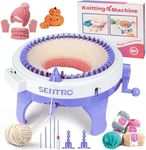Buying Guide for the Best Knitting Machines
Choosing a knitting machine can be a fun and rewarding process, especially if you love crafting or want to make your own clothes and accessories. The right knitting machine can help you create beautiful projects more quickly and with less effort than hand knitting. To find the best fit for you, it's important to understand the main features and specifications of knitting machines, and how they relate to your needs and skill level. By focusing on the key specs, you can make sure you pick a machine that matches the types of projects you want to make and the yarns you like to use.Type (Flat Bed vs. Circular)The type of knitting machine refers to the way it forms stitches and the shapes it can create. Flat bed machines are best for making flat pieces like scarves, panels, or sweaters that are sewn together, while circular machines are designed for making tubes, such as hats or socks, in one piece. If you want to make a variety of garments, a flat bed machine offers more flexibility, but if you mostly want to make seamless items, a circular machine is more convenient. Think about the kinds of projects you plan to knit most often to decide which type suits you best.
Gauge (Needle Spacing)Gauge refers to the distance between the needles on the machine, which determines the thickness of yarn you can use and the fineness of the fabric you can create. Machines with a standard gauge are good for medium-weight yarns and general projects, while fine gauge machines are for thin yarns and delicate fabrics, and bulky gauge machines are for thick yarns and chunky knits. If you like working with a specific yarn weight, choose a machine with a gauge that matches. For general use, a standard gauge is a safe choice.
Number of NeedlesThe number of needles on a knitting machine affects the maximum width of the fabric you can knit in one piece. More needles mean you can make wider items, like blankets or large sweaters, without needing to join panels. If you plan to make big projects, look for a machine with a higher needle count. For smaller items, a lower number is sufficient and can make the machine easier to handle.
Manual vs. ElectronicManual machines require you to move the carriage by hand and set patterns manually, while electronic machines can store patterns and automate some processes, making complex designs easier to create. Manual machines are simpler and often more affordable, while electronic machines offer more features and convenience. If you enjoy hands-on work and simple patterns, a manual machine is a good fit. If you want to experiment with intricate designs or save time, consider an electronic model.
Patterning CapabilitiesPatterning capabilities refer to the types of stitch patterns the machine can create, such as fair isle, tuck, slip, or lace. Some machines can only do basic stitches, while others have attachments or built-in features for more complex patterns. If you want to knit plain fabrics, a basic machine is enough. If you love textured or multicolored designs, look for a machine with advanced patterning options.
Ease of Use and MaintenanceEase of use covers how simple the machine is to set up, operate, and maintain. Some machines are designed for beginners, with clear instructions and fewer parts, while others are more complex and suited to experienced knitters. Maintenance includes cleaning and oiling the machine to keep it running smoothly. If you are new to machine knitting, choose a model known for being user-friendly and easy to care for.
